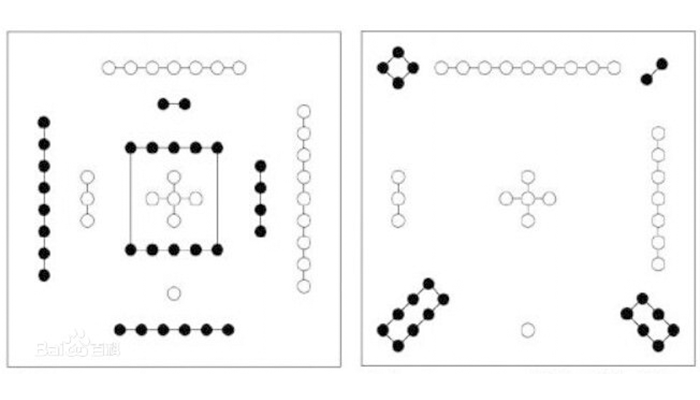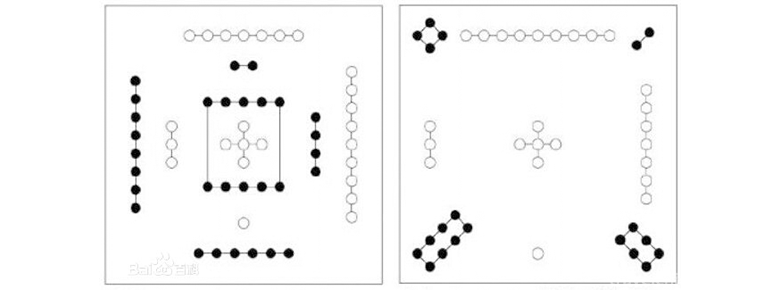Legend of Hetuluo Books
Legend of Hetuluo Books
The legend of Hetu Luoshu is a folklore system about Hetu and Luoshu, which was born in Luoyang, Henan Province. It mainly includes the legend of Longma Negative Tu Temple and the offering of Luoshu by tortoise.
In Huimeng Town of Mengjin County, the intersection of the Yellow River and Tuhe River, its tributary, is said to be the "Longma Negative Map" site, with the Longma Negative Map Temple built; and in Xichangshui Village of Luoning County, the intersection of Luohe River and Xuanhu River, its tributary, is said to be the "Shengui Negative Book", with the stone tablet of "Luochushu".
On November 11, 2014, Hetuluoshu legend was approved by the State Council to be included in the fourth batch of national intangible cultural heritage list.
Myths and legends
The legend of Hetu Luoshu is a folklore system about Hetu and Luoshu, which was born in Luoyang, Henan Province. It mainly includes the legend of Longma Negative Tu Temple and the offering of Luoshu by tortoise.
Legend depicts the origin of Hetu and Luoshu: During the period of Fuxi, a dragon horse emerged from the Yellow River, and its spiral hair became a figure of "16 dwelling below, 27 dwelling above, 38 dwelling on the left, 49 dwelling on the right, and 50 dwelling on the middle". This is the "river map". Fuxi drew eight hexagrams according to the "river map", from which the book Zhouyi came; while Dayu was harnessing water, a dragon horse emerged in the Luohe River. The tortoise, with lines, circles and dots on its back, is organized into groups. This is "Luoshu". Dayu interprets "Luoshu". This is "Hong Fan" in Shangshu.
The legend of Hetuluo books has a long history in Heluo area, and there are many records in pre-Qin literature. In the book of Zhouyi Xici, it says, "When the river comes out of the picture, Luo publishes the book, the sage does it." In the Western Han Dynasty, Kong An Guo and Liu Xin also explained the Hetu Luoshu. The original meaning of Zhouyi written by Zhuxi in Southern Song Dynasty was first attached with the pattern of "Hetu Luoshu".
Myth controversy
The original prototype of Hetu is a white rotating dragon. The so-called "river" is not the Yellow River, but the Milky Way.
Legend influence
In 1987, a Neolithic site was discovered in Anhui Province. One of the jade turtles was shocked by the pattern on the jade board. And the pattern on the jade board is the abnormity of the Eight Diagrams. The patterns on river charts also affect the costume models of the Yi people in Sichuan Province. Early river patterns often appear on their national costumes.
Social commentary
Heluo culture takes the "River map" and "Luo Shu" as the symbol, manifests the origin of Chinese traditional culture. Taking Xia, Shang and Wednesday as the backbone of the culture, it embodies the continuity of Chinese traditional culture. It takes the cultural essence of the ancient capital of Luoyang as the core, manifests the gravity of Chinese traditional culture, and spreads the excellent culture to the outside world with the way of "South Luolang" moving south. It reflects the radiation of Chinese traditional culture. Heluo culture was born in the Central Plains and flourished in the Central Plains, which spread to all parts of the country and overseas, affecting the development of history for thousands of years. This is not only the pride and pride of the Chinese nation, but also an important topic worthy of praise and in-depth discussion in the history of human civilization.
—— People's Network
The current Hetuluo books are inaccurate
In the Song Dynasty, Zhu Xi sent his friend Cai Jitong to Sichuan to look for the legendary Hetu Luoshu. Cai Jitong brought back two pictures and said that one was Hetu and the other was Luoshu. Zhu Xi believed that. But only in the Yuan Dynasty did people discover that Cai Jitong actually found three pictures, one of which he concealed. This picture is the real river chart, which is the predecessor of the Yin and Yang pictures of the Eight Diagrams seen today. Both of the pictures he handed Zhu Xi are Luoshu.
—— Author A Cheng
Hetuluoshu legend is one of the legends about the origin of Chinese civilization and the root culture of the Chinese nation. It confirms the long history of Chinese civilization and is of great significance to the study of the origin of Chinese culture.
—— Xinhua


-
1.Cattle back Mountain Niubeishan Mountain
Niubei Mountain is located in the border of Xingjing County and Luding County in Ya'an City, Sichuan Province. It is the watershed between Qingyi...
Time 2018-10-13 -
2.Chaoyang Bird Fossil National Geological Park
Chaoyang Bird Fossil World Geopark is located in Chaoyang City, western Liaoning Province. Chaoyang is located at the junction of Liaoning, Hebei and Mongolia provinces in the throat of Chinese cock t
Time 2019-01-05 -
3.Guan Tang hot spring
Guantang Hot Spring is located in Tangtou Town, Linyi City, Shandong Province, on the East Bank of Yihe River. The hot spring covers an area of nearly 260 Mu and has a construction area of 100,000 squ
Time 2019-01-13 -
4.Heluo drum
Heluo Dagu, commonly known as "Shuoshu", is one of the traditional local songs in Henan Province.
Time 2019-05-03 -
5.Drama Costume and Opera Production Skills
Drama costume and costume production skills, local traditional handicraft in Suzhou City, Jiangsu Province, one of the national intangible cultural heritage.
Time 2019-05-08 -
6.Manchu Ergui wrestling
Ergui wrestling is a traditional Manchu folk dance spread in the urban and rural areas of Longhua County, Hebei Province. It was formed in the late Qing Dynasty (around 1820 A.D.) and flourished betwe
Time 2019-05-17 -
7.Production Techniques of National Musical Instruments
The production of national musical instruments in Suzhou is one of the local traditional handicraft techniques in Jiangsu Province. With a long history, a wide range of varieties, exquisite skills and
Time 2019-06-05 -
8.Song Brocade Weaving Skills
Song brocade weaving technology, traditional handicraft in Suzhou City, Jiangsu Province, is one of the national intangible cultural heritage.
Time 2019-06-16 -
9.Bronze Ware Making Skills Datong Copper Ware Making Skills
Datong bronze ware is a traditional handicraft of the Han nationality. It has a long history and exquisite craftsmanship. As early as the Northern Wei Dynasty, it enjoyed a great reputation. Since the
Time 2019-06-21 -
10.Silver and Copper Ware Making and Gold smelting Techniques
Silver and bronze wares production and gold mincing skills, local traditional skills in Huangzhong County, Qinghai Province, one of the national intangible cultural heritage.
Time 2019-07-13 -
11.Thanksgiving tower
Baoen tower is located in Baoen tower Cultural Square, Jiangyang District, Luzhou City, Sichuan Province, commonly known as Luzhou white tower. It is one of the cultural relics under key protection in Luzhou city. Its unique "white pagoda dawn" is one of the "Eight Sights of Luzhou".
Time 2020-10-15